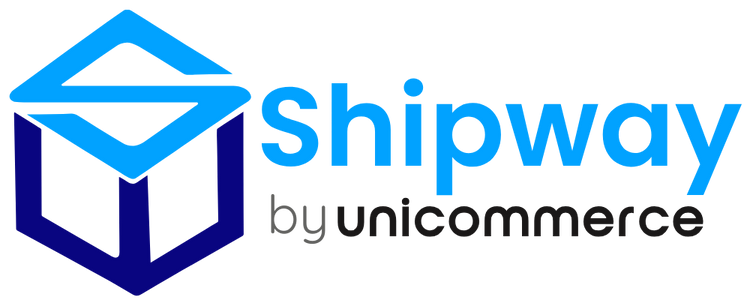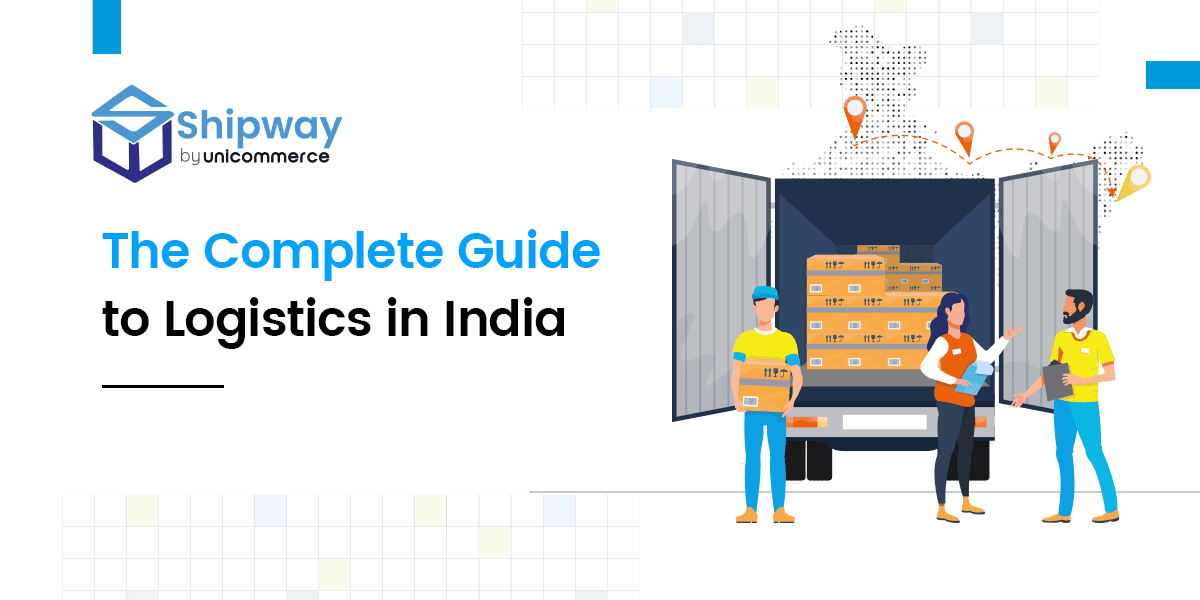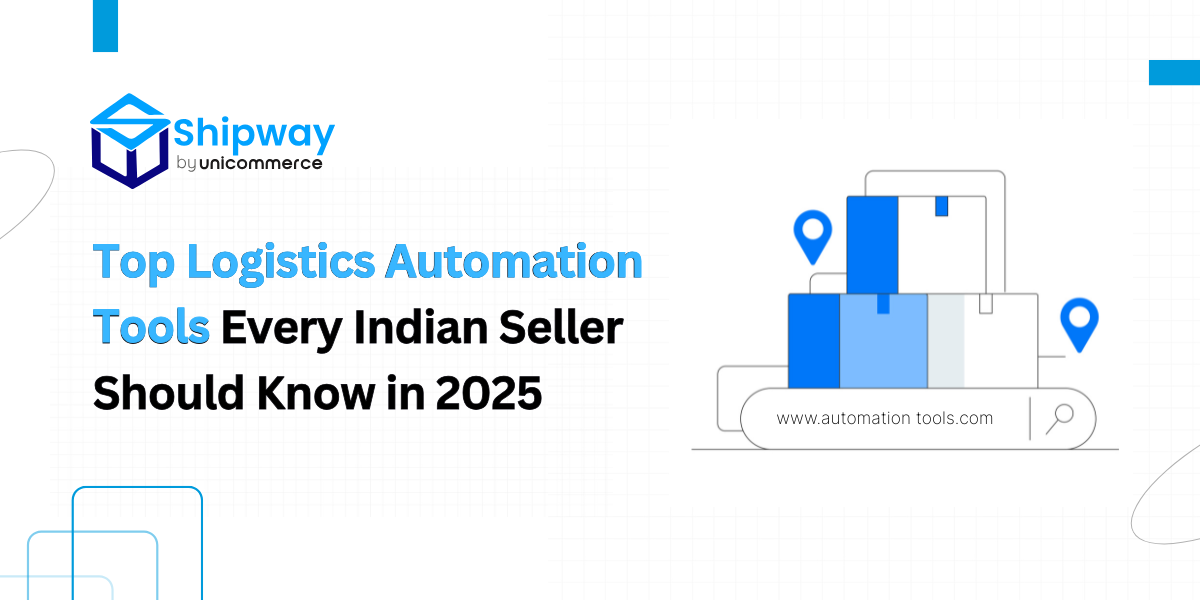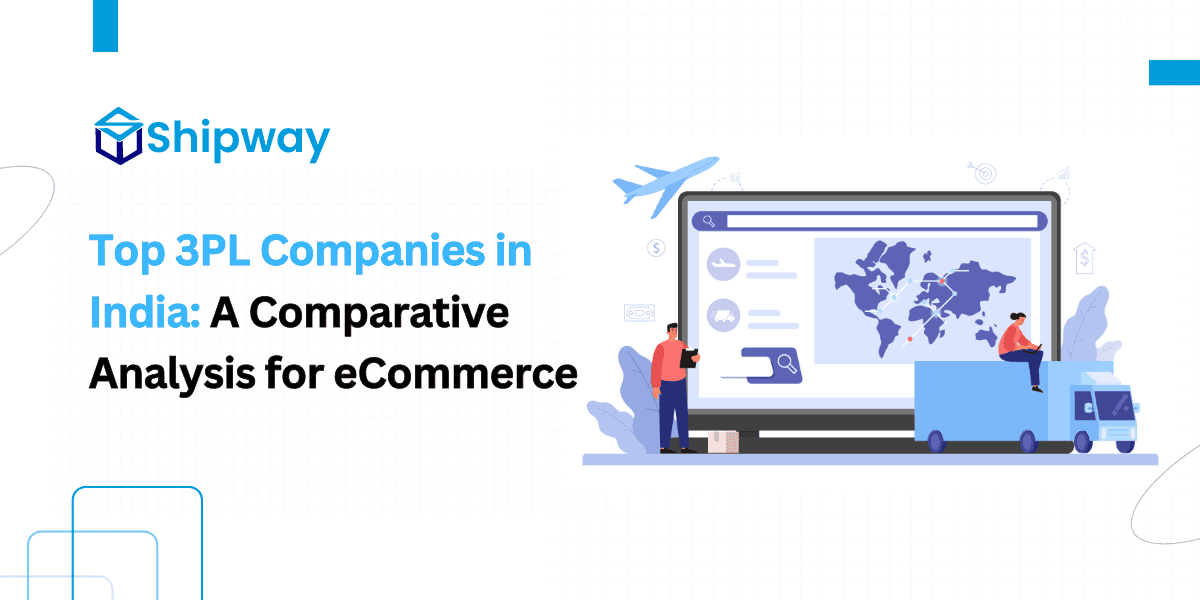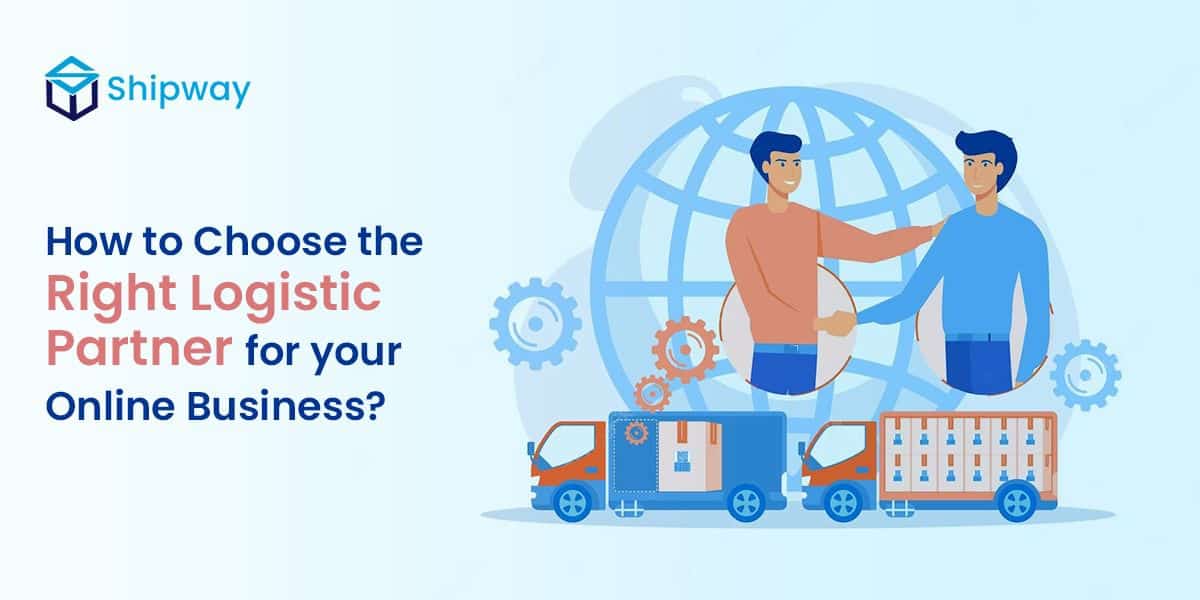The main driver of this transformation is the booming e-commerce market, which has fundamentally changed the logistics landscape. E-commerce businesses are choosing to trust specialized logistics companies because they offer solutions that go beyond simple transportation.
These logistics partners have mastered “last-mile delivery,” the most challenging and critical part of the process, ensuring timely and reliable delivery to the customer’s doorstep. This focus on customer experience is a major reason why e-commerce companies are outsourcing their logistics needs. This partnership allows them to scale their operations quickly and efficiently, a necessity in a market where customer expectations for fast and reliable delivery are higher than ever before.
Whether you are a seller looking to improve your delivery process, or simply curious about how India’s economy is being reshaped. This blog will walk you through the world of logistics in India, explaining how it has changed and why it is now so important-
Overview of India’s Logistics Landscape: Market Size, Growth Drivers & Policy Impact
Logistics in India has been valued at around $250 billion and growing at a CAGR of 10–12%, the logistics sector is transforming the way goods move across the country. From courier companies in India handling last-mile delivery to ecommerce logistics companies in India optimizing supply chains, efficiency and reliability have never been more critical.
Key Growth Drivers
- E-commerce Expansion: The surge in online shopping has significantly increased demand for efficient logistics solutions, including last-mile delivery and reverse logistics.
- Infrastructure Development: Initiatives like the Dedicated Freight Corridors (DFC) and the PM Gati Shakti Yojana are enhancing connectivity and reducing transit times.
- Technological Integration: The adoption of technologies such as Automation for logistics, IoT, and AI is streamlining operations and improving efficiency.
- Warehousing Modernization: Upgrades in warehousing facilities are supporting better inventory management and faster order fulfillment.
Government Policies & Indices
- National Logistics Policy (NLP): Aimed at reducing logistics costs and improving efficiency, the NLP seeks to integrate various modes of transport and streamline processes.
- PM Gati Shakti Yojana: This initiative focuses on creating a unified logistics network by enhancing infrastructure and promoting multimodal connectivity.
- Logistics Performance Index (LPI): India’s ranking on the LPI reflects its logistics performance, with ongoing efforts to improve in areas like customs procedures, infrastructure, and tracking capabilities.
India currently hosts over 4,400 Indian logistics companies, each contributing to a highly competitive market.
The Flow of Logistics in India- From the First Mile to Last Mile
First Mile: Pickup, Packaging, and Consolidation
This is the starting point of every e-commerce order, and it determines how smoothly the rest of the delivery process will run.
Pickup: Products are collected from warehouses, fulfillment centers, or seller locations. In cities, courier agents usually follow scheduled routes and handle multiple pickups efficiently. In rural or remote areas, the process is more complicated. Sellers managing multiple warehouses often face challenges coordinating several pickups in a single day.
Packaging: Once collected, products are packed to prevent damage during transit. Proper labeling, protective packaging, and organized consolidation are crucial. A single mispack or missing label can result in misrouted shipments, returns, and dissatisfied customers.
Consolidation: After packing, shipments are consolidated into trucks or containers heading toward regional hubs. This step optimizes costs and improves delivery efficiency. Sellers must coordinate consolidation carefully, especially when sending products from multiple locations.
Common Challenges in Rural/Remote Areas:
- Poor Connectivity: Many villages and small towns have limited road access, making pickups unpredictable.
- Incomplete Addresses: Missing landmarks or inconsistent address formats increase the chances of missed pickups.
- Low Shipment Volumes: Small orders spread across distant locations increase travel costs and reduce operational efficiency.
- Manual Handling: First-mile operations often rely on manual processes, which can cause errors in labeling or packaging.
- Weather & Seasonal Disruptions: Monsoons, floods, and extreme heat can slow down pickups and damage goods.
Due to this, sellers face delays or mistakes in the first mile that affect the mid mile and last mile, increasing costs and risking customer dissatisfaction. Optimizing pickups, packaging, and consolidation is essential for sellers to scale operations efficiently and maintain timely deliveries.
Mid Mile: Moving Goods Across Regions
The mid mile is the stage where shipments travel from regional warehouses or hubs to sorting centers closer to the customer. This stage involves longer distances and multiple transport modes, including trucks, trains, air cargo, and sometimes coastal shipping.
Most logistics companies in India follow a hub-and-spoke model, where shipments from various sellers are consolidated at central hubs and then routed efficiently to regional hubs closer to the delivery points.
Challenges for Sellers:
- Transit Delays: Traffic congestion, weather disruptions, and infrastructure gaps can slow deliveries.
- Coordination Across Hubs: Shipments must be correctly sorted and routed at each hub; mistakes here can cause misrouted packages.
- Cost vs. Speed Trade-offs: Air transport ensures faster delivery but at higher costs, while road or rail is slower but cheaper. Sellers need to balance delivery speed with budget constraints.
- Handling Multiple Couriers: Many sellers use multiple courier partners to reach different regions, making mid mile tracking and coordination complex.
Impact on Sellers: Inefficiencies in the mid mile increase delivery times, operational costs, and the risk of customer complaints. Optimizing this stage is key to maintaining consistency and reliability in deliveries across India.
Last Mile: Delivery to the Customer
The last mile is the final part of the logistics journey and often the most visible to the customer. Delivery agents travel from regional hubs to the customer’s doorstep, navigating cities, small towns, and rural paths.
Challenges for Sellers:
- Incomplete or Incorrect Addresses: Missing house numbers, unclear landmarks, and pin code issues can cause failed deliveries.
- Cash-on-Delivery (COD) Payments: Collecting COD payments increases complexity and the risk of failed or returned orders.
- High Customer Expectations: Urban buyers expect fast, reliable deliveries, making any delay highly visible.
- Limited Pin Code Serviceability: Some remote areas may not be covered by all courier partners, restricting delivery options.
- Operational Costs: Longer delivery routes and repeated failed attempts raise costs for sellers.
The last mile determines the final customer experience. Delays, failed deliveries, or mishandled packages can damage reputation, increase returns, and affect repeat purchases. Efficient last-mile planning, route optimization, and courier coordination are essential for maintaining customer trust.
Reverse Logistics in E-commerce
Reverse logistics refers to the process of moving goods from the customer back to the seller or manufacturer. It covers returns, exchanges, refunds, and handling items that need to go back due to defects or dissatisfaction.
1. Returns, Exchanges, and Refunds
- E-commerce customers expect hassle-free returns and exchanges.
- Effective reverse logistics ensures timely processing, reduces customer frustration, and preserves brand trust.
- Delays or complex processes can directly impact customer loyalty.
2. RTO (Return to Origin) Challenges
- RTO occurs when an order is undeliverable and sent back to the seller.
- High RTO rates increase operational costs, reduce warehouse efficiency, and tie up inventory.
- Common causes: incorrect addresses, failed deliveries, or customer cancellations.
3. Impact on Cost
- Reverse logistics can account for 10–15% of total logistics costs in e-commerce.
- Expenses include transportation, restocking, quality checks, and sometimes disposal.
- Efficient RTO management reduces unnecessary losses and optimizes cash flow.
4. Impact on Customer Experience
- Slow or complicated returns processes hurt customer satisfaction and retention.
- Transparent communication, quick refunds, and easy exchanges strengthen customer trust.
- Brands that simplify reverse logistics often see higher repeat purchase rates.
Top Logistics Service Providers and Courier Companies in the Global Supply Chain
The global supply chain relies heavily on two categories of players- Logistics Service Providers (LSPs) and Courier & Express Companies. While LSPs manage large-scale, cross-border, and multimodal logistics, courier companies ensure speed, reliability, and last-mile delivery for businesses and consumers worldwide.
Logistics Service Providers (LSPs)
LSPs play a significant role in presenting the complex flow of goods across borders. Their services typically include freight forwarding, customs clearance, warehousing, inventory management, inland transportation, and multimodal shipping solutions. By offering end-to-end visibility and compliance support, LSPs enable businesses to scale globally without managing the intricacies of international trade themselves.
Leading Global LSPs:
- DHL Supply Chain & Global Forwarding– A global leader offering integrated freight, warehousing, and supply chain solutions across 220+ countries.
- Kuehne + Nagel– Specializes in sea freight, air freight, and contract logistics, with strong digital capabilities.
- Maersk Logistics & Services– Beyond ocean shipping, Maersk provides end-to-end supply chain solutions, including inland logistics and warehousing.
Courier & Express Companies
While LSPs focus on scale and integration, courier and express delivery companies specialize in time-sensitive, parcel-level shipments. Their strength lies in last-mile connectivity, real-time tracking, and fast turnaround, making them indispensable for ecommerce, retail, and urgent B2B deliveries.
Renowned Courier & Express Companies:
- FedEx– Global leader in overnight shipping and international air express delivery.
- UPS (United Parcel Service)– Offers parcel delivery, freight transport, and supply chain management services worldwide.
- DHL Express– Dominates international express delivery with strong customs clearance expertise.
- TNT Express– Focused on reliable parcel services in Europe, now part of FedEx.
- Aramex– A Middle East-based logistics giant with growing global presence.
- DTDC- One of India’s largest courier networks, offering domestic and international parcel delivery with strong coverage in tier-2 and tier-3 cities.
- Blue Dart- A leading express logistics company in India, known for its time-definite delivery services and integrated express air transportation.
- Ecom Express- A specialized logistics provider for the ecommerce sector in India, offering end-to-end solutions including first-mile, last-mile, reverse logistics, and cash-on-delivery (COD) management.
3PL & Shipping Aggregators: Your Partners for E-commerce Growth
For any brand looking to grow, especially in the D2C (Direct-to-Consumer) space, managing logistics can quickly become too complex. This is where two key players, 3PL companies and shipping aggregators come in, offering services that were once only available to large corporations.
The Role of 3PL in D2C Growth
A 3PL (Third-Party Logistics) company is an expert partner that handles all or part of your logistics operations for you. For a D2C brand, this is a game-changer. Instead of building your own warehouses, hiring staff, and managing a fleet of vehicles, you can simply hand over your products to a 3PL partner.
Here’s how 3PLs are fueling the D2C boom:
- Scalability on Demand: D2C brands often experience sudden growth, especially during sales or with viral marketing campaigns. A 3PL offers flexible warehousing and shipping capacity, allowing you to easily handle a massive surge in orders without any extra work on your part.
- Faster Delivery and Wider Reach: A good 3PL has warehouses in multiple locations across the country. This means you can store your products closer to your customers, especially in big cities.
- Expert Handling: 3PLs specialize in managing the entire fulfillment process, from taking an order to picking, packing, and shipping.
The Benefits of a Shipping Aggregator
While a 3PL manages the entire logistics process, a shipping aggregator is a platform that simplifies the final step: getting the best shipping option. Think of it as a single dashboard that connects you to multiple courier companies at once.
Here are the key benefits of using a shipping aggregator:
- Multi-Courier Access: Instead of tying up with just one courier company, an aggregator gives you access to a wide network of partners like Delhivery, Blue Dart, Ecom Express, and more.
- Cost Optimization: Aggregators work on a large scale, which means they get special, discounted rates from courier companies. They pass these savings on to you, which can significantly lower your shipping costs.
- Fraud Prevention: A major problem for online sellers is fraudulent orders, especially those with Cash on Delivery (COD). Shipping aggregators use data and technology to flag suspicious orders, such as those from locations with high return rates or from customers with a history of refusing packages.
Smart Warehouses and Technology-Driven Fulfilment
The traditional warehouse is being replaced by a “smart warehouse.” These facilities use technology like AI, robotics, and the Internet of Things (IoT) to manage inventory and fulfill orders with incredible accuracy and speed.
- Robots and automated systems handle tasks like picking products and transporting them to a packing station. Smart systems track every item in real-time, which helps prevent mistakes and makes sure popular items are always in stock.
- As a seller, this means your orders are processed faster, leading to quicker deliveries for your customers. It also ensures that the right item is shipped every time, which helps reduce returns and builds customer trust.
Dark Stores: Bringing the Warehouse Closer to the Customer
These stores are strategically located in busy city areas, acting as mini-warehouses that bring inventory closer to your customers.Today’s logistics is a high-tech operation that uses smart technology to ensure every product is handled with speed and precision when it comes to warehouse and fulfillment.
Logistics Costs in India: Key Components and Common Challenges
Logistics costs in India are significantly higher than the global average, making efficiency a constant concern for businesses. While most economies spend around 8-9% of GDP on logistics, India spends nearly 13-14%, which directly affects competitiveness. For e-commerce, retail, and D2C brands, these costs can impact profitability if not closely monitored.
Let’s explore the key components that make up logistics expenses and the common challenges businesses face.
Major Cost Components
Freight and Transportation:
Freight charges are the biggest contributor to logistics costs. In India, over 60% of goods move by road, making businesses highly dependent on fuel prices and road infrastructure.
Fuel Costs:
Fuel price fluctuations directly influence logistics rates. A small increase in diesel prices can multiply into higher freight costs nationwide, creating unpredictability in supply chain budgets.
Cash on Delivery (COD) Charges:
India’s customer base is still heavily dependent on COD payments, particularly in tier-2 and tier-3 cities. Courier companies in India often charge a fixed handling fee or 1–3% of the order value for COD, which adds a significant layer of cost for e-commerce sellers.
Returns and Reverse Logistics:
High return rates, sometimes up to 30% in fashion and apparel e-commerce, add substantial reverse logistics costs. Each return involves pickup, quality checks, repackaging, and either resale or disposal.
Non-Delivery Reports (NDRs):
Every time a shipment is not delivered, logistics providers issue Non-Delivery Reports. Handling these requires repeated delivery attempts, customer calls, and rescheduling. The cost of failed deliveries compounds over time and reduces efficiency.
The Challenge of RTOs and NDRs
One of the biggest challenges in logistics in India is Return to Origin (RTO). An RTO occurs when a shipment is sent back to the seller due to non-delivery. This not only doubles transportation costs (forward + return) but also results in unsold inventory. In COD cases, sellers incur a complete loss as no payment is collected.
Key reasons for RTO and NDR include:
- Fake or fraudulent orders placed online.
- Incorrect or incomplete addresses provided by customers.
- Customers refusing COD deliveries.
- Unavailability of buyers during delivery attempts.
Future Trends in Indian Logistics
India’s logistics industry is undergoing rapid transformation. What was once a fragmented, cost-heavy sector is now embracing technology, new business models, and government-backed initiatives to meet the growing demands of ecommerce and retail. For sellers, this means preparing for an ecosystem that is faster, smarter, and more sustainable.
Below are some of the key trends shaping the future of logistics in India.
ONDC & Open Commerce
The Open Network for Digital Commerce (ONDC) is one of the boldest initiatives in India’s digital commerce landscape. Unlike traditional platforms that control both the marketplace and logistics, ONDC decouples these layers, giving sellers more freedom to choose how their products reach customers.
For logistics, this opens up several possibilities:
- Equal access for SMEs and local sellers: Small businesses no longer need to rely on big marketplaces for distribution. They can directly plug into ONDC and access a wide network of logistics companies.
- Competitive pricing: With multiple logistics partners available on the network, sellers can compare rates, service levels, and delivery timelines before making a choice.
- Market expansion: ONDC can help sellers in Tier 2 and Tier 3 cities connect with national buyers without setting up expensive infrastructure.
AI/ML & Automation
Artificial Intelligence (AI) and Machine Learning (ML) are becoming the backbone of modern logistics operations.
Some practical applications include:
- Predictive ETAs: Using historical data and real-time traffic inputs, AI systems now provide accurate delivery time predictions, reducing uncertainty for customers.
- Route Optimization: By analyzing road conditions, delivery density, and driver availability, AI helps cut down travel time and fuel costs.
- NDR (Non-Delivery Report) Prediction: AI can flag high-risk orders before delivery attempts, allowing sellers to take corrective measures like re-confirming addresses or customer availability.
- Fraud Detection in COD Orders: Cash-on-delivery remains popular in India but comes with risks of fake or refused orders. AI models can analyze buyer history, region, and behavior to minimize fraud-related losses.
On the operational side, warehouse automation is gaining traction. Automated picking systems, AI-driven demand forecasting, and smart inventory tracking are enabling businesses to manage large volumes during peak seasons with fewer errors. For sellers, this means faster turnaround, reduced RTOs, and improved margins.
Green & Sustainable Logistics
With rising environmental concerns, green logistics is quickly moving from a “good-to-have” to a business necessity. Consumers today are more eco-conscious, and regulations are pushing companies to reduce their carbon footprint.
Key trends in sustainable logistics include:
- EV Adoption: Several courier companies in India are experimenting with electric vehicles for last-mile deliveries, reducing both emissions and fuel costs. Big players like Amazon and Flipkart have already committed to expanding their EV fleets.
- Drone Deliveries: While still at an experimental stage, drones are being tested for small, lightweight deliveries in rural areas where road access is limited.
- Eco-Friendly Packaging: Sellers are shifting from plastic-heavy packaging to recyclable or biodegradable alternatives to appeal to sustainability-driven buyers.
- Government Push: Policies encouraging EV infrastructure and carbon-neutral practices are expected to accelerate adoption across the sector.
For sellers, adopting green practice enhances brand reputation and appeals to the growing segment of environmentally aware consumers.
Faster Deliveries
Speed has become the ultimate differentiator in logistics. Indian buyers now expect same-day or even instant deliveries, especially in metro and Tier 1 cities. This shift is fueled by two major trends:
- Quick Commerce: Players like Zepto, Blinkit, and Swiggy Instamart have set new benchmarks with deliveries in 10–20 minutes. The model thrives on dark stores and hyperlocal networks, but it also raises customer expectations across other categories.
- Same-Day Delivery: More ecommerce platforms are setting up regional fulfillment centers to make same-day delivery feasible. This requires real-time inventory visibility, efficient courier tie-ups, and predictive demand planning.
- Next-Day Delivery: What was once a premium service is now an industry standard. Extending next-day delivery beyond metro cities into Tier 2 and Tier 3 markets is a challenge, but also a huge growth opportunity for sellers.
While faster deliveries improve customer loyalty, they also add to logistics costs in India. Sellers will need to balance speed with profitability, adopting hybrid strategies like offering express delivery as a premium option while keeping standard delivery affordable.
Wrapping Up
The future of Indian logistics will be defined by open commerce networks, AI-driven intelligence, green innovations, and lightning-fast delivery models. For ecommerce businesses, the challenge will be to integrate these changes without inflating costs. Those who adapt early, leveraging ONDC, automation, sustainable practices, and quick delivery ecosystems will be best positioned to thrive in India’s fast-evolving ecommerce landscape.
At the same time, logistics companies in India are also evolving their offerings to match seller needs whether through specialized ecommerce logistics services, tech-driven courier companies, or cost-efficient supply chain models. This synergy between sellers and logistics providers will decide how effectively brands can meet rising consumer expectations while keeping operations profitable.
Which is the best logistics company in India for my e-commerce business?
How can I reduce logistics costs in India without compromising delivery speed?
How do I manage returns and RTOs effectively?
How can small sellers reach Tier 2 and Tier 3 cities efficiently?
Expanding beyond metros is tough due to logistics constraints. Options include partnering with multiple courier companies, using regional fulfillment hubs, or leveraging ONDC to tap into existing delivery networks efficiently.
How can I leverage technology to streamline logistics?
Sellers often ask how to make their operations more efficient. AI for logistics, predictive ETAs, automated inventory systems, and integrated dashboards can help manage orders, reduce errors, and scale operations without increasing manpower costs.
Related Posts
Top Logistics Automation Tools Every Indian Seller Should Know in 2025
Logistics in India is advancing quickly, driven by the rise of quick commerce and a surge in online shopping. With this shift, customer expectations ...
read moreTop 3PL Companies in India: Complete Analysis for E-commerce Business
In the past couple of years, there has been a huge growth in the Indian eCommerce sector, creating a demand for cost-effective logistics solutions...
read moreHow to Choose the Right Logistics Partner for your Online Business?
The heartbeat of every successful online business is seamless logistics – the art of getting products from your warehouse shelves into the hands...
read more